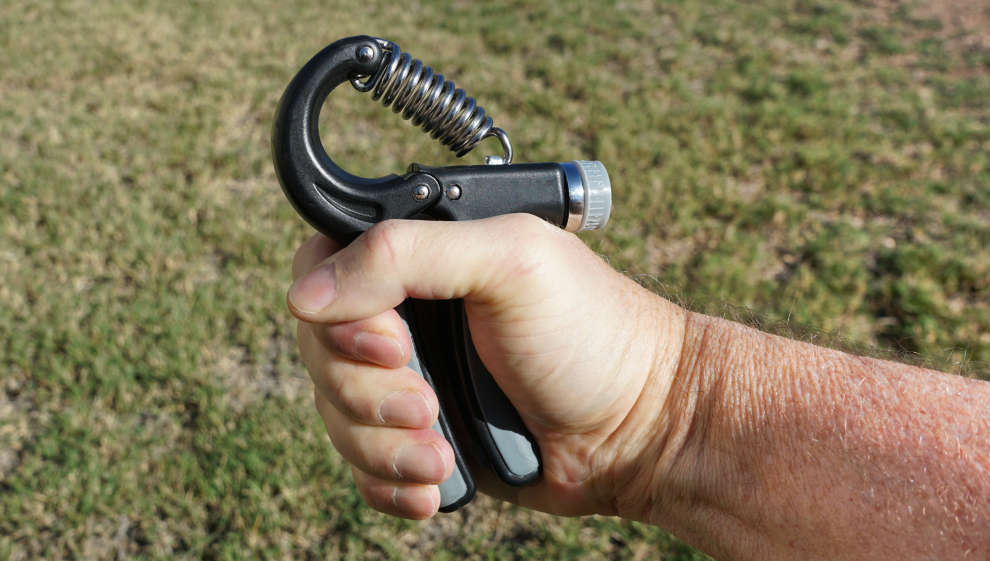A simple trick to lower your blood pressure
- Overview
- Full article
Blood pressure is heavily influenced by diet and activity. That’s why it’s so easy for us to lose control of it. On the other hand, it means taking back control is within your grasp. It takes just small changes make a big difference.
If you have raised blood pressure, reducing systolic blood pressure via exercise by just a small amount (2mmHg for those who are counting) can reduce your risk of premature death in middle age by 10%. With a good exercise plan, it’s possible to reduce that risk by 30% over a 12-week period.
Click here for an explanation of what blood pressure numbers mean.
But that’s not why you’re here. You want to know the trick.
Get a grip: a simple exercise to lower blood pressure
Before you get excited, this trick isn’t designed to replace regular exercise and a healthy diet. Rather, it complements those things. Consult your GP before adding this to your exercise regime:

- Take one of these relics from the 70s. It’s an isometric handgrip device and they’re available via internet and health retailers
- Squeeze and hold it repeatedly
- Do literally nothing else.
To be fair, it’s a little more complex than that. But the general idea is that you can do this exercise with minimal effort in front of the TV or while sitting with friends and family.
The device was developed in the 1970s to help US fighter pilots temporarily boost their blood pressure to avoid passing out at high G-forces. But using it over sustained periods actually dropped the pressure levels of the fighter pilots with high blood pressure.
This kind of intervention has been shown to reduce systolic blood pressure by 8–10mmHg over eight weeks. Enough to start taking you from elevated to normal levels quickly and efficiently.
Check with a GP first
Sounds too good to be true right? Well, it comes with a caveat – you must follow strict guidelines and the advice of your doctor. Like the fighter pilots, your blood pressure will be temporarily boosted when contracting the handgrip device. That can be dangerous if your blood pressure is very high or you also have high cholesterol.
The key is not to overdo it. The general guidelines are as follows:
- Set the spring resistance to 50% of maximum resistance. After doing this you should aim to squeeze the device as far as possible and hold that squeeze for 2 minutes. If that feels impossible, lighten the resistance until you can just about maintain a full 2-minute squeeze. The same applies if the load feels too light; increase resistance until you are just able to hold the device for 2 minutes
- Record or remember this intensity as you will remain at that load for the next eight weeks
- Take a rest day. Yes, that's right. Don’t do any more today
- The next day, and starting with your right hand, squeeze the device as far as it will go
- Once fully contracted hold the squeeze for a full 2 minutes. After the 2 minutes is up slowly release the pressure and rest for 1 minute
- Repeat, but this time use your left hand, maintaining the same squeeze for 2 minutes and then a slow release
- Repeat the above 3 more times in each hand, totalling 4 contractions in each hand. Don't be tempted to do any more than this.
After eight weeks you should review your blood pressure or attend your follow-up GP appointment as prescribed by your healthcare practitioner. If your BP hasn’t changed, fear not. You should repeat the maximal hold test and find what will now be a slightly higher training resistance. Once you have that repeat the process for another eight-week cycle.
We all differ in response time and you may simply just need a little longer to adapt. Remember this regime compliments changes in your diet and physical activity and is not a replacement.
After expert advice to improve your health and fitness? Tune in to the Let's Talk Health podcast and get actionable and digestible advice that's delivered in a way we can all understand.
Last updated Thursday 13 June 2024
First published on Monday 30 January 2017

